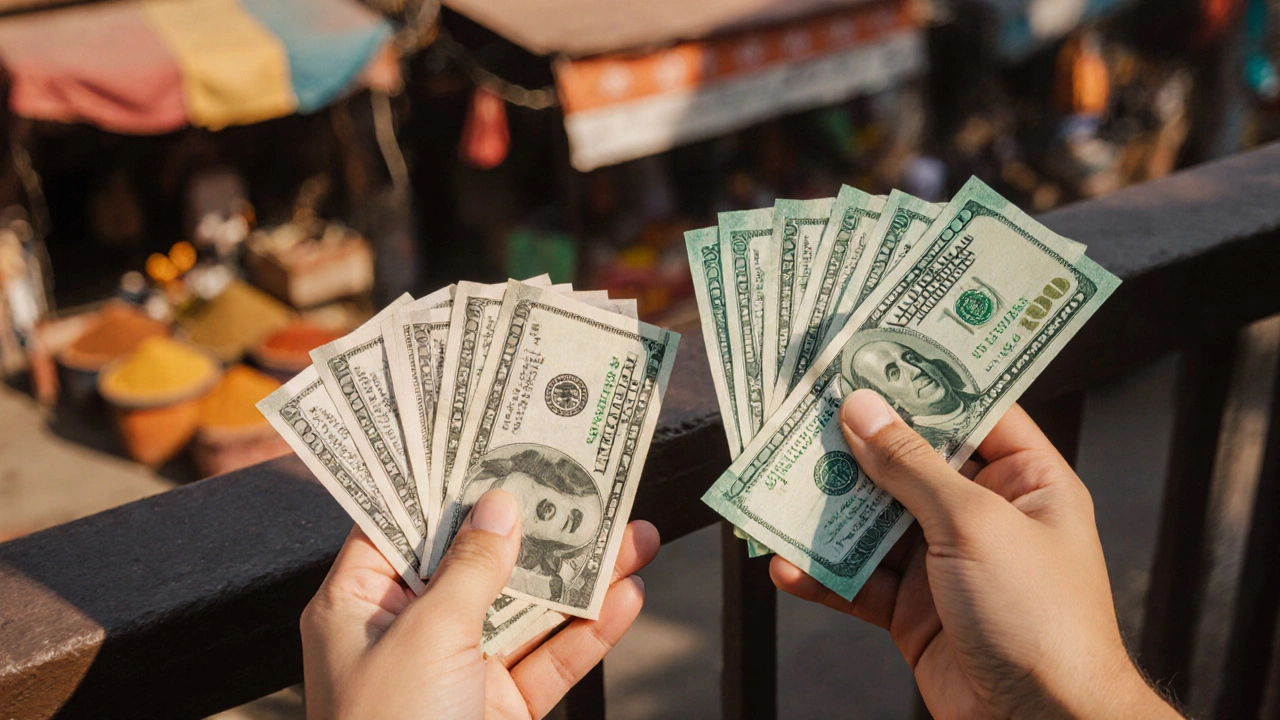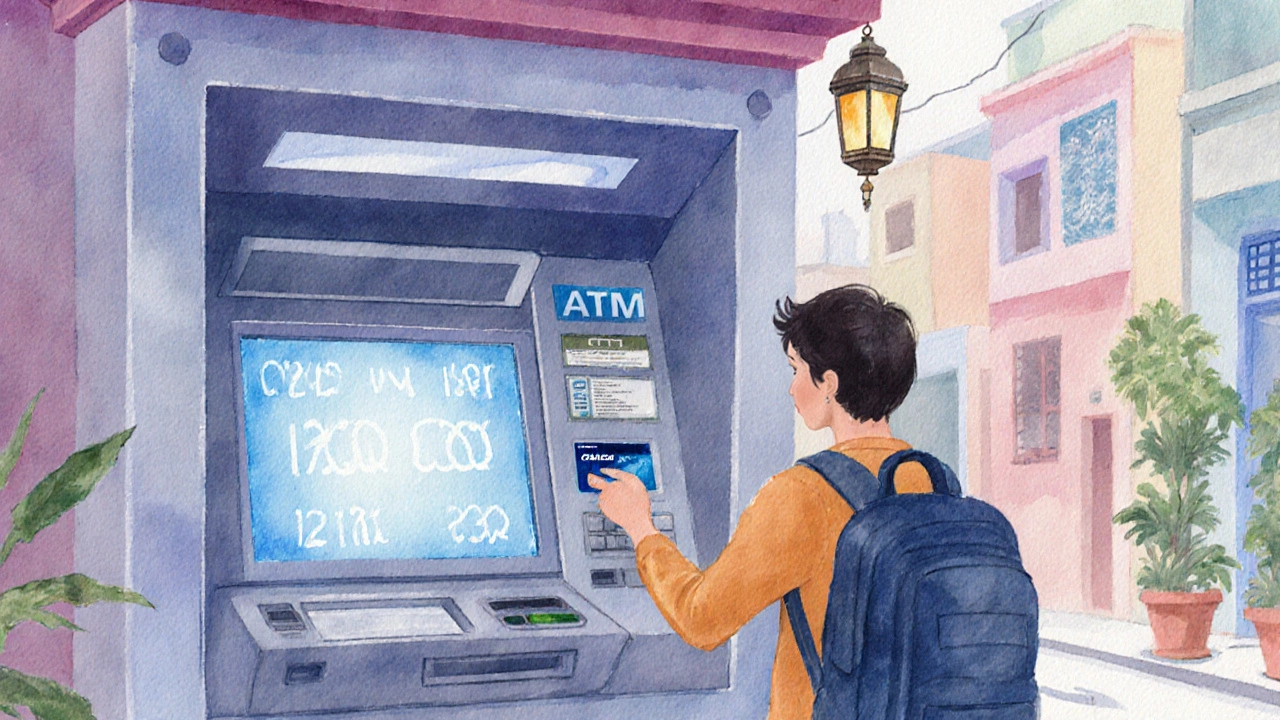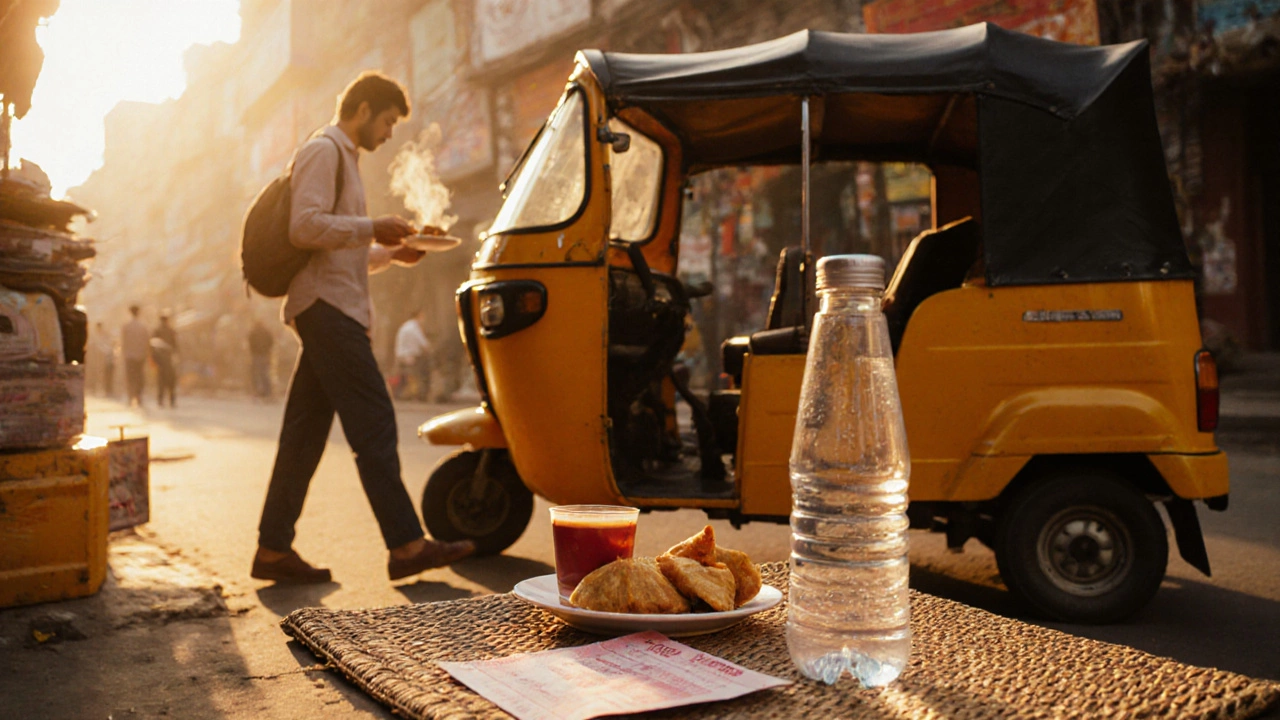How Much Is $100 US in India? Current USD to INR Conversion & Budget Tips
 Oct, 21 2025
Oct, 21 2025
USD to INR Budget Calculator
Your Budget in Indian Rupees
What $100 USD Can Cover
Breakfast: ₹100-150 • Lunch: ₹200-300 • Dinner: ₹350-500
Auto-rickshaw/bus rides in mid-range cities
Museums, palaces, and historical sites
Planning a trip to India on a shoestring budget? One of the first questions you’ll face is how far USD to INR will stretch. Converting $100 US into Indian rupees isn’t just a math exercise - it’s the foundation of every daily decision, from where to eat to how to move around.
Current USD to INR Exchange Rate (October 2025)
As of October 21 2025, the mid‑market rate hovers around 1 USD = 83.45 INR. That means a clean $100 will buy you roughly 8,345 INR. Rates fluctuate daily, so always double‑check a reliable source before you exchange.
Here’s how to get the freshest numbers:
- Visit the Reserve Bank of India (RBI) website for the official published rate.
- Use a trusted Currency Converter (online tools like XE, OANDA, or Google) for real‑time market data.
- Check your bank’s app - many show the conversion they’ll apply for card transactions.
What Exactly Is US Dollar (USD)? And Indian Rupee (INR)?
The US Dollar is the United States’ official currency, recognized worldwide and widely used for international trade. The Indian Rupee is India’s legal tender, issued by the RBI and denoted by the symbol ₹. Understanding their relationship helps you spot the best conversion rates.
Top Ways to Convert $100 Into Indian Rupees
| Method | Typical Rate Spread | Fees | Speed | Convenience |
|---|---|---|---|---|
| Airport Currency Counter | 2‑3% worse | None, but bad rate | Immediate | Very high (always open) |
| Bank Branch (RBI‑regulated) | 0.5‑1% better | ₹150‑₹300 per transaction | Same‑day or next‑day | High (needs ID) |
| ATMs (Visa/ Mastercard) | Close to mid‑market | ₹30‑₹50 + possible foreign‑transaction fee | Instant | High (any ATM) |
| Online Transfer (e.g., TransferWise, Revolut) | Near‑mid‑market (0.2‑0.5% spread) | ₹50‑₹100 | Minutes to a few hours | Medium (needs internet) |
| Prepaid Travel Card (e.g., Visa TravelMoney) | 1‑1.5% spread | Load fee ₹200 | Instant after loading | Medium (card acceptance varies) |
For most budget travelers, pulling cash straight from an ATM offers the best combination of rate and speed. Just remember to ask the machine for a “local currency” transaction - not “dynamic currency conversion” (more on that later).

Avoiding Hidden Costs: The Fine Print
Even the best‑rate method can bite you with hidden fees:
- Dynamic Currency Conversion (DCC): Some merchants and ATMs let you pay in USD. They’ll quote a conversion rate that can be 5‑10% worse than the market rate.
- ATM Withdrawal Limits: Indian ATMs often cap withdrawals at ₹20,000 per transaction. You may need multiple pulls, each incurring a small fee.
- Foreign Transaction Fees: Certain credit cards tack on 1‑3% on top of the exchange rate.
- Bank Commission: Indian banks may levy a flat commission for cash withdrawals by foreign cards.
To keep $100 from evaporating, use a debit card with no foreign‑fee policy, decline DCC prompts, and withdraw the maximum allowed amount per pull.
What Can $100 Buy You in India?
Putting the conversion into real‑world terms helps you plan better. Here’s a typical day‑to‑day budget for a solo traveler in a mid‑range city like Jaipur or Mysore:
- Breakfast: Street‑food plate - ₹100‑₹150
- Lunch: Thali at a local eatery - ₹200‑₹300
- Dinner: Mid‑level restaurant - ₹350‑₹500
- Local transport (auto‑rickshaw, bus): ₹150‑₹250
- Entry fees for a museum or palace: ₹250‑₹400
- Miscellaneous (water, snacks, tip): ₹150‑₹200
All together, a comfortable day costs around ₹1,200‑₹1,800, which means your $100 (≈₹8,345) can comfortably cover four to six days of food, transport, and modest sightseeing.

Smart Money Moves for Budget Travelers
- Use a No‑Fee Debit Card: Cards from many US banks (e.g., Charles Schwab, Capital One) waive foreign transaction fees and reimburse ATM fees worldwide.
- Load a Prepaid Travel Card only if you need a backup. Choose one that lets you lock in a rate before you depart.
- Leverage Digital Wallets: Apps like Paytm, Google Pay, and PhonePe are accepted at millions of shops. Link them to your no‑fee US debit card for instant payments.
- Carry Small Bills: Keep ₹50‑₹200 notes handy for vendors who don’t accept cards.
- Check Exchange Rates Daily: Small fluctuations can add up. Set a price‑alert on your favourite converter app.
Quick Takeaways
- Mid‑market rate (Oct 2025): 1 USD ≈ 83.45 INR ⇒ $100 ≈ 8,345 INR.
- ATMs give the closest rate; avoid airport counters unless you’re in a pinch.
- Decline “pay in USD” offers - they hide a steep DCC surcharge.
- $100 can comfortably fund 4‑6 days of modest meals, travel, and entry fees.
- Best practice: use a no‑fee US debit card, withdraw max per ATM, and keep small cash for street vendors.
Frequently Asked Questions
What’s the best place in India to exchange $100?
ATMs tied to Visa or Mastercard usually give the nearest-to‑mid‑market rate. If you prefer cash, a major bank branch (e.g., State Bank of India) offers a better spread than airport kiosks, though you’ll pay a small commission.
Do I need to declare $100 when entering India?
No. Indian customs allows you to bring in up to $5,000 in cash without declaring. Anything above that must be listed on the customs form.
Can I use my US credit card for everyday purchases?
Yes, but watch out for foreign transaction fees (usually 1‑3%). If your card is fee‑free, it works well for hotels and larger shops. Small vendors often prefer cash or mobile wallets.
How often should I check the exchange rate?
Check daily, especially if you plan to exchange a big chunk. Rates can swing 0.5‑1% in a week, which matters for a $100 budget.
Is dynamic currency conversion safe?
It’s legal but costly. DCC adds a markup of 5‑10% on top of the exchange rate. Always opt for the local currency (INR) when given a choice.
Armed with the right conversion numbers and smart money habits, $100 can turn into a solid start for exploring India’s vibrant streets, historic sites, and unforgettable flavors. Happy traveling!